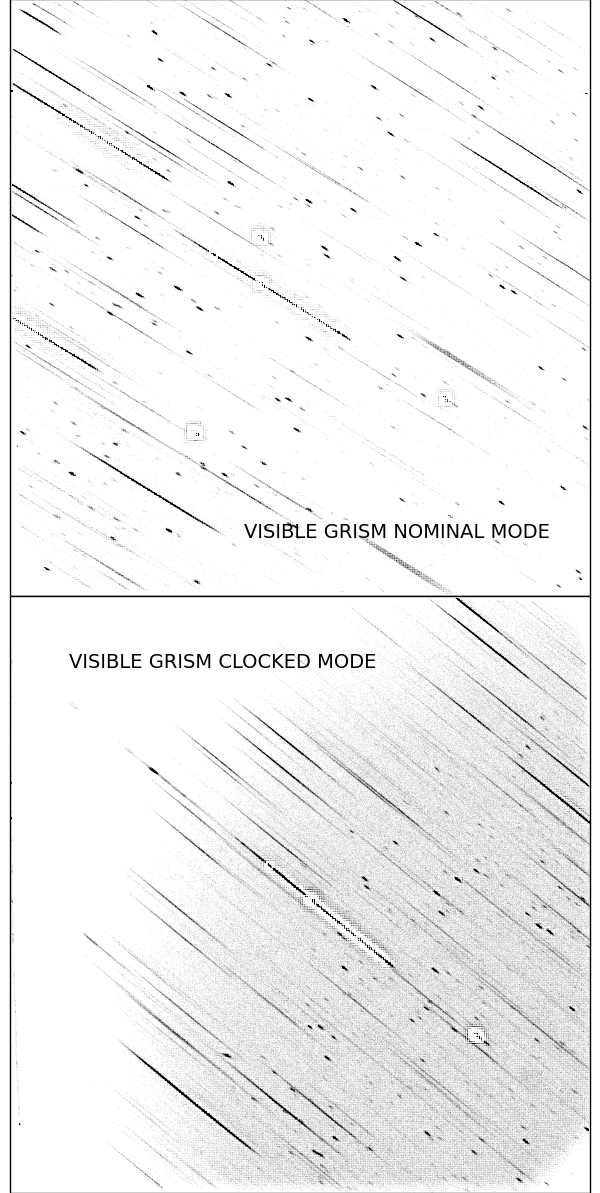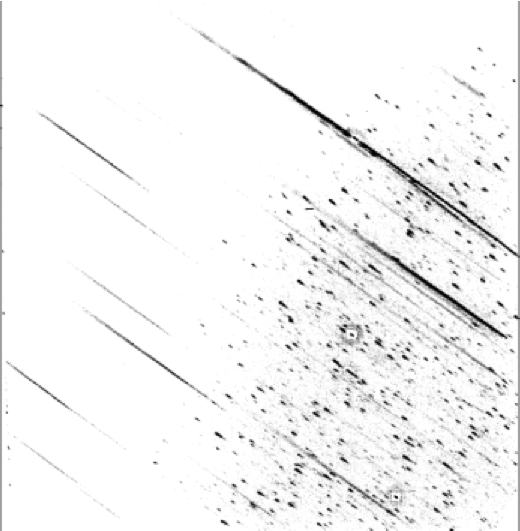Description of the grisms¶
The UVOT uses a modified Ritchey-Chrétien optical design where light from the telescope is directed towards one of two redundant detectors using a 45-degree mirror. A filter wheel allows selection of either a UV or optical lenticular filter, a “white”/clear filter, a UV grism, a visible grism, or a blocked position. Behind the filter wheel is an image intensifier configured to detect each photon event with a 2048x2048 pixel resolution.
The Swift UVOT grisms were originally the flight spares for the XMM OM instrument. The grisms for both instruments were designed using a zemax optical model. The Swift UVOT instrument design and build procedure was modified to avoid the molecular contamination which impaired the XMM OM UV sensitivity. Therefore the sensitivity of the UVOT grism is much better in the UV than in the XMM OM grisms. The UVOT visible grism optics were blazed at 3600 Angstrom. However, the UVOT UV grism optics were not blazed to obtain better UV throughput; therefore the second order spectrum of this grism is significant and has to be accounted for in the analysis when orders overlap.
Each of the two grisms can be operated in two modes. The so-called “nominal” mode is where the filter wheel is rotated so that the grism is positioned in direct alignment with the telescope optical light path. However, in order to reduce the contamination by zeroth order emission of the background and field sources, in the so-called “clocked mode” the filter wheel is turned so the grism is partially covered by the telescope exit aperture which restricts the field of view, blocking some field stars and reducing the background light. In effect this mimics the properties of a slit spectrograph with a broad ‘slit’. In the clocked mode the first order spectra of many stars in the field of view lie in the area uncontaminated by background or the zeroth order spectra of other field stars, see figure figure 1: ratio of expected to measured flux.
figure 1: visible grism image¶

A typical detector image of the visible grism. The top panel was observed in nominal mode, the bottom panel in clocked mode. The zeroth orders are the short features, while the long lines are the first order spectra. In the clocked mode the zeroth order images are absent from the top-left of the image. Note also the change in the angle of the spectra on the detector between nominal and clocked mode. The nominal grism image has a flat background, while in the clocked grism mode the background varies across the image.
The clocked mode has proven to be the preferred mode of observation. A comparison of clocked and nominal images in figure figure 2: UV grism (clocked mode) image shows how effective the reduction of zeroth order contamination is from other sources in the field for those spectra falling on the left hand side of the image.
figure 2: UV grism (clocked mode) image¶
The “grisms” are actually made up of two optical elements: a grism and a tilt compensator, see figure figure 3: Diagram with rays. The grism provides on-axis dispersion by means of a prism and transmission grating, but the focal plane is tilted. The tilt compensator element flattens the focal plane. The UV grism is direct ruled on a Suprasil substrate, while the visible grism is replicated epoxy. The grating in the visible grism is blazed to maximise the transmission of the first order. The UVg grating was not blazed. Because the optics are in the converging beam of the telescope, which uncompensated would induce a shift in focus, the leading surface is slightly convex. The dispersed light is refocussed before leaving the grism. The grism design was optimised for the UV grism in the first order around 2600 Angstrom, and in the visible grism around 4200 Angstrom.




